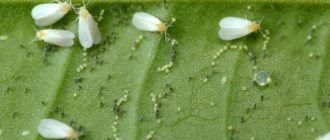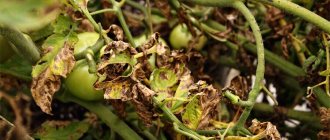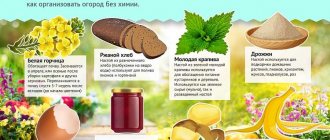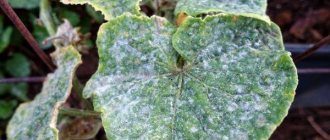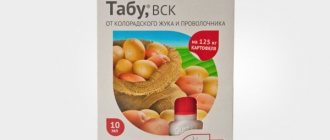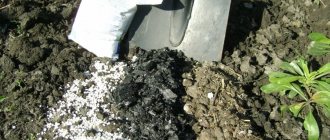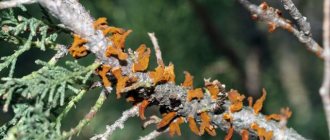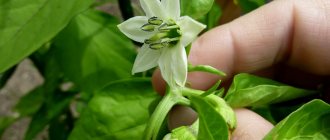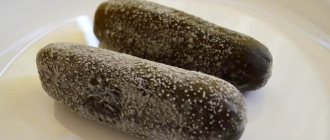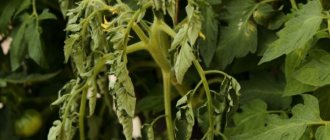Features of caring for orchids
Many representatives of the Orchidaceae family belong to the group of epiphytes. These are plants that do not need soil. Under natural conditions, they grow on trees, attached to the bark by their roots. They absorb nutrients in gaseous form from the air. For indoor floriculture, many varieties and hybrids have been bred that retain the properties of their original ancestors. At home, orchids are grown in a special substrate , most of which is pine bark. First of all, it serves as a support for the roots, but the nutrients it contains are not enough for the plant. That's why additional feeding is needed .
Experts have developed nutritional compositions for orchids. They are mainly sold in liquid form. Recently, innovative developments have appeared - applicators and nutritional sticks.
Many orchid lovers prefer manufacturers who have proven themselves in the fertilizer market:
- "Compo" (Compo),
- Planton Cote (Planton Cat),
- Master (Master),
- "Blank sheet",
- "Bona Forte" (Bona Forte).
To get good growth and long flowering, you cannot do without fertilizing . Their quantity and frequency of application depends on the vegetative development of plants. Read more about when to apply fertilizer for orchids.
Pine bark is used as a substrate. It can be replaced by other materials - sphagnum moss, fern roots, expanded clay, special artificial gel, mineral wool, etc. Whatever the filler, the orchid needs additional nutrition.
How often should you feed orchids?
When to apply fertilizer directly depends on the stage of vegetative development.
- The highest frequency of fertilizing occurs during the period of active growth of the root system and ground organs. In all varieties of orchids it occurs soon after flowering ends. Another thing is that for each variety or hybrid it occurs at different times of the year. For example, many phalaenopsis can bloom twice a year if given the right conditions. Other orchids - Cattleyas, Cymbidums, Dendrobiums - generally produce one-time flowering, but it can occur at any time of the year. Therefore, the periods of active growing season are different for all species and varieties. This means that the time of intensive replenishment is determined individually .
- When the orchid is renewed, that is, new roots, leaves grow, and in some types of pseudobulbs, fertilizers are applied frequently. On average, you will need 2 feedings per month. For example, if the phalaenopsis has bloomed at the beginning of spring, then active feeding sessions begin no earlier than 2 weeks after the last bud has withered.
- The frequency of applications decreases with the appearance of a peduncle. The number of feedings is reduced to once a month.
- Flowering takes away a large amount of nutrients. Therefore, it is important to provide the orchid with phosphorus-potassium fertilizers in advance. When buds appear, feeding is limited or canceled altogether .
Any variety and hybrid of orchid necessarily has a dormant period when the plant must rest from active growth and flowering. At this time, orchids are not only not fertilized, but not even watered.
L. A. Kovalskaya – Art. n. With. Department of Tropical Crops of the National Botanical Garden
them. N. Grishko.
Feeding methods
Fertilizing can be divided into 2 types - root and foliar.
- Root feeding is intended to replenish the reserves of macro and microelements in healthy plants. Before fertilizing, the roots of the flower are well moistened . The fertilizer is dissolved in warm and clean water and a solution is obtained in the concentration indicated on the label. The flower is slowly immersed in a container of water, pouring the resulting solution over the top. Leave for 20 minutes. Excess solution is removed after flowing into the pan.
- Foliar feeding is used:
- during active plant growth;
- with chlorosis, which is a lack of microelements;
- in cases where the first method cannot be applied: when the root system is damaged.
[ads1]Foliar feeding of orchids is carried out in the morning or in cloudy weather so that direct sunlight does not hit the leaves after treatment and burn them.
You should avoid drafts in the room and monitor the air temperature: it should be from 17°C to 27°C. Spray the plant thoroughly, ensuring that the fertilizer reaches the leaves on both sides and visible roots.
Buds and flowers must be protected from contact with the solution. To prevent rotting and death of growing points, immediately after feeding they are inspected and dried.
Comparative analysis of fertilizers for orchids
The range of feedings is so wide that orchid fans don’t need to rack their brains about how to feed their pets. You just need to choose a product suitable for your hybrid. It is important to remember the following features:
- Fertilizers containing nitrogen are applied when ground organs grow - young leaves and pseudobulbs.
- For the formation and formation of peduncles and buds, phosphorus, potassium and trace elements are needed . During this period, compositions without nitrogen are chosen. If you continue to add it, the excessive growth of green mass will not allow flower buds to form.
Most orchid fertilizers are applied in liquid form.
Many brands of ready-made fertilizers meet the qualities necessary to feed orchids. They are easy to use at home.
The following compositions are popular among orchid lovers:
| Name | Properties and Application | Estimated cost |
| "Compo for orchids" (Germany) | Mineral composition – N (Nitrogen) – 3, P (phosphorus) – 6, K (potassium) – 6 + trace elements. · To provide the orchid with the necessary nutrition during the period of active growth. · Plants' general condition improves, disease resistance increases, and the flowering period extends. The package contains a recommendation for preparing a working solution - 7 ml per 1 liter of water. One bottle holds 75 liters of water. | From 470 rub. for 500 ml |
| 3. Fertilizer “Compo for orchids” (Germany) | ||
| Planton Cote | Fertilizer that is applied during planting or transplanting orchids. Mixed with the substrate at the rate of 3 g per 1 liter of soil mixture. Long-acting feeding lasts for 3 months. | 150 rub. per package |
| 4. Fertilizer for orchids “Planton Cote” (Planton Cat) | ||
| Master | Complex mineral fertilizer - NPK - 13.40.13, as well as iron (Fe), manganese (Mn), zinc (Zn), Copper (Cu). The high phosphorus content promotes the formation of flower stalks and buds. The feeding rate is 5 g per 2 liters of water. | 35 rub. for 25 g |
5. Fertilizer for orchids “Master”. | ||
| JOY “Lignohumate – for Orchids” | Mineral fertilizer with humic additives. Used in the autumn-winter period once a month. | 155 rub. for 250 ml |
| Agricola for orchids | It is produced in the form of a powder that must be dissolved in water in a ratio of 1:10. | 125 rub. for 285 ml |
| Bona Forte for orchids | Compound: · NPK – 4:2.5:7 + · vitamins C, B1, PP · Microelements, · Rooting stimulator – succinic acid. The fertilizer is available in chelated form. Used during active growth. When laying flower buds, the fertilizer needs to be changed. | RUB 119.00 for 285 ml |
| 6. “Bona Forte” fertilizer for orchids.” | ||
Feeding orchids at home
It is recommended to use special preparations for this type of flower. They are less saturated with microelements, an increased concentration of which can lead to the death of the crop.
But it is not always possible to purchase fertilizer directly for orchids. Then complex formulations are used.
The fertilization process has its own characteristics:
- they are used during the growing season;
- observe a certain frequency;
- Plants are not fertilized in autumn and winter.
Important! Before feeding, the roots are soaked in warm, settled water. This prevents burns.
During flowering
During this period, root fertilizing cannot be applied. Otherwise, already developed flowers will fall off and new buds will not form. In this case, you can also get the opposite effect - the development of chlorosis of the leaves.
Fertilization can only be done by foliar application. For this, the following feeding options are used:
- Universal compositions for flowering crops. Dissolves in three times the volume of water.
- Fertilizer for orchids. Diluted with double the amount of water.
- A solution for foliar feeding of plants in the form of a spray.
At the time of flowering, orchids are sprayed with a nutrient composition. It penetrates through the surface of the leaves. Fertilizer should not get on the roots.
For rejuvenation
The need of an orchid for this procedure can be determined by external signs. These include:
- the formation of aerial roots occurs high on the stem;
- the plant blooms poorly and rarely;
- the roots dry out and no longer fit into the pot;
- the orchid falls over on its side.
It is necessary to fertilize with complex preparations. To do this, 1 g of the active substance is diluted in 1 liter of water.
Peculiarity! The plant is poured with the resulting solution until it completely saturates the soil mixture. After this, the liquid will begin to flow into the pan.
When should I fertilize for it to bloom?
If there are 5-8 leaves, the orchid is almost ready to bloom. It is recommended to use growth stimulants for the active development of peduncles. The following nuances are taken into account:
- Fertilizing begins from the moment of active vegetation of the leaf mass and flower stalks.
- After the first bud opens, it is stopped.
- It is necessary to alternate root and leaf feeding methods. This is a good prevention against burns.
- Soil acidity should not exceed 5.6-6.4 pH.
Its level can be determined using a test or a special device. At increased rates, the volume of fertilizing is reduced.
Types of fertilizers
Many manufacturers have developed different release forms and compositions designed for different methods of fertilizing.
For example, the world-famous (Germany) produces several types of orchid fertilizers:
- Liquid fertilizer – 500 ml. Concentrated solution, which is diluted immediately before use.
- Applicator for orchids – 5 hermetically sealed bottles of 30 ml each. The manufacturer has provided for convenient use of the fertilizer. It is in finished form in the package. Before placing it in the soil, an incision is made at the end of the long spout and immersed in the substrate. The nutrient solution is poured out by drip in about two days. Before applying the soil mixture must be thoroughly watered.
Compo applicators (Germany) are an innovative development in the field of fertilizers for indoor plants.
- Fertilizer sticks help out those who do not have the opportunity to devote a lot of time to caring for orchids. The action of one stack lasts for 100 days, that is, more than 3 months. The dosage is selected according to the volume of the pot:
| Pot diameter(cm) | Number of stacks |
| 10 | 2 |
| 14 | 3 |
| 20 | 4 |
The sticks are inserted closer to the edge of the pot at an equal distance from each other for uniform dissolution.
Means to improve flowering
In addition to mineral elements, orchids need other substances for the formation and development of flower buds. These include growth stimulants containing phytohormones:
- “Bud” contains hyberillonic acid salt (phytohormone), microelements, humic acids. The drug is used during the formation of peduncles and buds. It also helps plants recover after experiencing stressful situations. For example, if as a result of improper care the plant has weakened.
- “Ovary” is offered by the manufacturer as a stimulator of fruit formation. But this process is impossible without full flowering. That is why this product is well suited for planting flowers when growing orchids.
- “Cytokinin paste” is the most popular remedy for guaranteed production of a peduncle.
Important! Growth stimulants do not replace fertilizers. They activate vital processes and help plants absorb nutrients.
Is it possible to fertilize an orchid during flowering?
Do I need to feed my orchid during flowering? In spring and summer, before the formation of the first flower, the plant is fertilized with root fertilizers . But as soon as the first flower blooms, they move on to appropriate fertilizers for the leaves and roots that are on the surface.
You can feed the orchid during flowering, but carefully.
When spraying from a spray bottle, you should try not to get on the blossoming buds , as after that they begin to wither. A blooming orchid must be fertilized correctly and carefully.
Features of feeding phalaenopsis and denrobium during flowering
Most often, orchids are sold in bloom. While growing in a greenhouse, the plant received a sufficient amount of nutrition, so you should not immediately feed it. First, the orchid must adapt to conditions that are different for it. Since this is a strong stress that takes a lot of effort, you cannot load the plant with new nutrients .
Tip #1 . If getting used to the new place goes well, then the first feeding is carried out 2 - 3 weeks after the end of flowering. This recommendation applies to phalaenopsis, dendrobiums and most other species.
When the orchid takes root, its further nutrition will depend on the characteristics of the vegetative cycle. The most intensive feeding is carried out when leaves and roots grow, and during flowering they are reduced to the required minimum, no more than once a month .
Bottom line
Orchid is a beautiful tropical flower. The beauty of the plant lies in its lush, bright blooms. You need to be careful about her nutrition and care. Only compliance with all conditions will ensure active budding, lush flowering and new shoots.
What mineral fertilizer did you use?
You can select multiple answers or enter your own.
- Superphosphate 13%, 1183 votes
1183 votes 13%1183 votes - 13% of all votes
- Urea 9%, 811 votes
811 votes 9%
811 votes - 9% of all votes
- Nitroammophoska 8%, 698 votes
698 votes 8%
698 votes - 8% of all votes
- phytosporin*7%, 625 votes
625 votes 7%
625 votes - 7% of all votes
- Dolomite flour 6%, 547 votes
547 votes 6%
547 votes - 6% of all votes
- Potassium monophosphate 5%, 465 votes
465 votes 5%
465 votes - 5% of all votes
- Azofoska*5%, 441 votes
441 votes 5%
441 votes - 5% of all votes
- Calcium nitrate*5%, 421 votes
421 votes 5%
421 votes - 5% of all votes
- complex mineral and vitamin*4%, 379 votes
379 votes 4%
379 votes - 4% of all votes
- potassium magnesia, urea, potassium sulfate, ash*4%, 320 votes
320 votes 4%
320 votes - 4% of all votes
- saltpeter*3%, 300 votes
300 votes 3%
300 votes - 3% of all votes
- Diammofoska 3%, 287 votes
287 votes 3%
287 votes - 3% of all votes
- Ammophoska 3%, 284 votes
284 votes 3%
284 votes - 3% of all votes
- View answers*3%, 267 votes
267 votes 3%
267 votes - 3% of all votes
- manure*3%, 248 votes
248 votes 3%
248 votes - 3% of all votes
- Ammonium sulfate 3%, 239 votes
239 votes 3%
239 votes - 3% of all votes
- potassium nitrate*2%, 214 votes
214 votes 2%
214 votes - 2% of all votes
- ammonium nitrate*2%, 186 votes
186 votes 2%
186 votes - 2% of all votes
- Potassium sulfate, magnesium sulfate*2%, 164 votes
164 votes 2%
164 votes - 2% of all votes
- only manure*1%, 114 votes
114 votes 1%
114 votes - 1% of all votes
- Potassium chloride 1%, 113 votes
113 votes 1%
113 votes - 1% of all votes
- Potassium humate*1%, 102 votes
102 votes 1%
102 votes - 1% of all votes
- Borofoska*1%, 95 votes
95 votes 1%
95 votes - 1% of all votes
- nitrophoska*1%, 72 votes
72 votes 1%
72 votes - 1% of all votes
- Nettle infusion*1%, 64 votes
64 votes 1%
64 votes - 1% of all votes
- Only ash*1%, 56 votes
56 votes 1%
56 votes - 1% of all votes
- Monoammonium phosphate, monopotassium phosphate, diammonium phosphate*1%, 49 votes
49 votes 1%
49 votes - 1% of all votes
- Anhydrous ammonia 0%, 40 votes
40 votes
40 votes - 0% of all votes
- Osmocote*0%, 34 votes
34 votes
34 votes - 0% of all votes
- gumi*0%, 31 votes
31 votes
31 votes - 0% of all votes
- ammophos*0%, 19 votes
19 votes
19 votes - 0% of all votes
- Quicklime*0%, 11 votes
11 votes
11 votes - 0% of all votes
- sulfoamophos*0%, 6 votes
6 votes
6 votes - 0% of all votes
- Nutrivant plus*0%, 4 votes
4 votes
4 votes - 0% of all votes
Total votes: 8889
Votes: 2128
01.04.2019 — 30.11.2022
* - added by visitor
×
You or from your IP have already voted.

